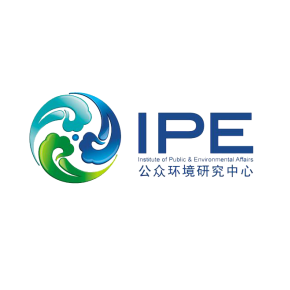- Title Page
- Introduction
- Becoming an environmentalist
- Obstacles to enforcement
- We must fight with data
- China Pollution Maps launched
- Taking on supply chains
- Pollution Information Transparency Index
- Tainted milk, heavy metalsand more
- Poison Apple
- Green investment
- Blueprint for blue skies
- Real-time data begins
- Real-time dilemma
- Appendix 1
- Appendix 2
- Appendix 3
- Appendix 4
Introduction
For decades after Deng Xiaoping’s rise to power in 1978, the Chinese government chased GDP growth without regard to environmental impact. The toll was steep. By 2013, desertification had claimed a quarter of the country’s area; up to 40 percent of its rivers were polluted (20 percent were unfit for human contact); and fewer than 1 percent of its 500 largest cities met World Health Organization (WHO) clean-air standards. [1] Breakneck growth under successive administrations had left the Chinese people better off economically, but had seriously degraded the natural environment.
Despite the dismal state of China’s natural resources, as of 2013 there were signs of progress in at least two areas: government transparency and public participation—particularly by environmental NGOs. One leader was the Beijing-based, nonprofit Institute of Public and Environmental Affairs (IPE), founded in 2006 by Ma Jun, a journalist-turned-environmentalist. Ma and his colleagues at IPE believed that, in the absence of reliable regulation and enforcement, and with an underdeveloped legal system, the best hope of improving China’s environment was through citizen and consumer pressure. They also believed that to act, citizens needed reliable information.

Perhaps swayed by an IPE petition, central regulators in July 2013 issued new rules that incorporated the nonprofit’s recommendation for the real-time release of pollution data. Henceforth, the country’s 15,000 largest and most polluting companies—most of them state-owned enterprises (SOEs)—would have to report chemical emission levels hourly to the Environmental Protection Bureau (EPB) in their province; the EPBs would publish the data online. The rules were to go into effect January 1, 2014, but many provinces got a head start in 2013.By 2013, IPE had built a global reputation for its innovative use of information technology to drive China’s environmental movement. It aggregated publicly available—but widely dispersed—pollution data, and embedded the data in online interactive maps. IPE demonstrated how the data could be used to pressure companies into better environmental performance. For example, it tracked emissions violations of Chinese companies supplying international corporations and, using a carrot-and-stick approach, persuaded the multinationals to improve the performance of their suppliers. China’s environmental authority seemed to value IPE’s role in bolstering its enforcement capabilities.
Just as it had with polluting suppliers of global brands, IPE planned to build an online interactive map and smart phone app using the provincial data. First, however, it prepared to release a report in January 2014 on the progress EPBs had made in implementing the real-time reporting rules. The report, Blue Sky Roadmap II: Real-Time Disclosure Begins , would show the public and media how to use the newly available data to reveal violations by individual enterprises. By way of example, it would identify specific SOEs shown to have exceeded pollution emission standards.
As IPE knew well, publishing information about SOEs presented risks. Many were protected by local officials, who relied on the SOEs to create jobs, boost economic growth and propel their own careers. At the national level, powerful ministries, entrenched corruption and conflicts of interest often shielded such enterprises. Furthermore, the information itself was not entirely reliable. IPE had noticed that the SOE emissions data exhibited puzzling spikes and drops, and its report reflected those without being able to fully account for them. Did the spikes reveal illegal dumping or something more benign, such as a glitch in the transfer of data from a factory to an EBP, or from an EPB to IPE? Likewise, did dips signal illegal tampering with monitors, or could they be attributed to a temporary halt to operations or a malfunction in the data transfer?
As IPE prepared to release its report, the mysterious data posed a problem. Ma and his colleagues believed that flawed data was better than no data. But might SOEs contest IPE’s information, or even lodge a legal complaint on the grounds that the “incorrect” information was defamatory? Fighting a legal battle would be costly to the small nonprofit. What if SOEs demanded revisions? How should IPE respond—remove contested data from the report (and in future from its website)? Perhaps it could work proactively with EPBs to improve data accuracy, or create a process for handling disputes. As the real-time regulations were implemented, there were bound to be many errors. Ma and his colleagues debated how to minimize risk without jeopardizing the organization’s mission.
[1] Elizabeth Economy, “China’s environmental future: The power of the people,” McKinsey Quarterly (June 2013).